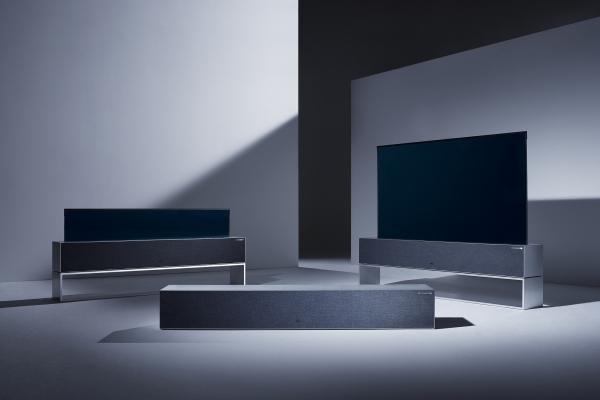
LG Display is struggling with low yield of rollable OLED panels for televisions due to using glass substrates.
Industry sources on Mar. 11 said LG Display seems to be using ultra-thin glass substrates with a thickness of under 0.2mm for the rollable panels. Due to this material, not only has the yield gone down, but potential loss rates are also high due to the fragility of the substrates.
LG Display had originally planned to roll out its 65-inch 4K rollable OLED TV panel in 2019, but had to delay the launch to this year. The display maker is now looking for solutions.
One option is to use PI substrates, instead of glass, to allow for more flexibility and lighter weight. Another would be to put another layer of transparent PI or Ultra Thin Glass (UTG), but experts point out that transparent PI would succumb to the high heat emitted during the manufacturing process. Therefore, switching to a PI film altogether is considered as the more realistic option.
Rollable TVs in which the screen can literally be rolled up inside the TV were first introduced at the Consumer Electronics Show in 2019.
The Elec is South Korea’s No.1 tech news platform.

